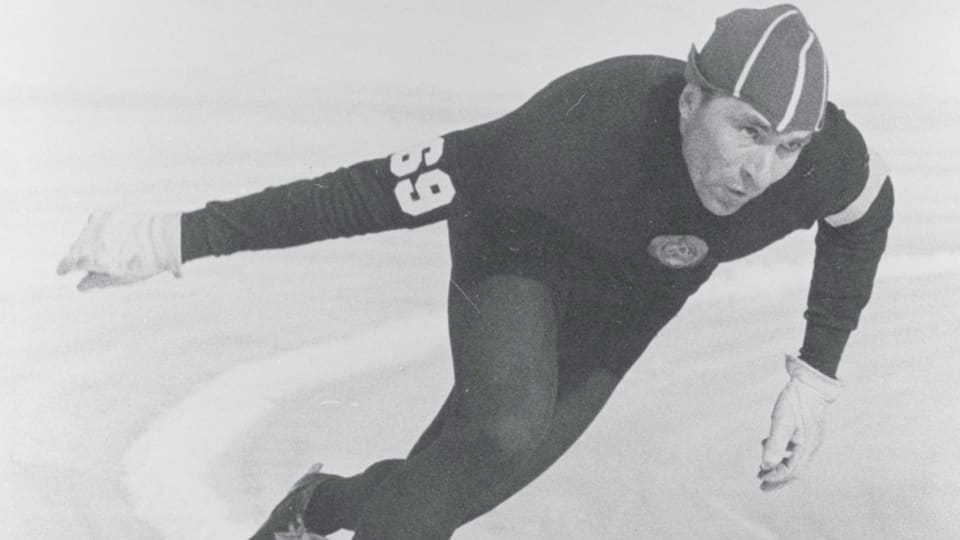Grishin strikes double gold again
Born on 23 March 1931 in Tula, some 200 kilometres south of Moscow, Yevgeny Romanovich Grishin was a skilled track cyclist and a keen skier in his formative years. At the age of 14. however, he decided to devote his energies to speed skating, honing his skills with CSKA Moscow. A trainee engraver at the time and a silversmith in later life, Grishin excelled at the 500m, the shortest speed skating distance, and quickly made his mark in national and then international competitions.

He won the 500m title and all-round bronze at the 1954 ISU World Championships in Sapporo (JPN), and followed up a year later by breaking two world records in Almaty (USR), posting a time of 2:09.8 in the 1,500m and then eclipsing Finnish skater Clas Thunberg’s 25-year-old 1,000m mark with a time of 1:22.8, which would not be beaten for another 12 years.
Then, in the lead-up to his Olympic debut at Cortina d’Ampezzo 1956, the Soviet skater trimmed the 500m world record to 40.2 on Lake Misurina (ITA), a time he matched as he claimed his first Olympic title weeks later. Another gold came his way at Cortina in the 1,500m, this time shared with his compatriot Yuri Mikhailov, after both skaters had set a new world record of 2:08.6.
Grishin arrived in Squaw Valley unbeaten over 500m since 1956 and was strongly backed to defend his Olympic title.
Taking to the ice in the 15th pair, with the USA’s Bill Disney leading the standings with a time of 40.3, Grishin set off at such a ferocious pace that he looked destined to become the first skater to dip beneath 40 seconds. However, in the final straight, he lost his balance and almost fell. Though his momentum was momentarily checked, his mis-step did not prevent him from equalling his world and Olympic record and pushing Disney into second, with fellow Soviet skater Rafael Grach then clocking 40.7 to secure the bronze.
Having been a joint gold medallist in the 1,500m in Cortina d’Ampezzo, Grishin was determined to make that title his own four years later. However, Norway’s Roald Aas had similar ambitions, and produced a strong finish to stop the clock at 2:10.4. When his turn came Grishin made another breathtaking start, clocking the fastest time of the whole competition with his first three splits. Nevertheless, he was unable to match the Norwegian’s sprint finish and he crossed the line in a time identical to his rival, which left him sharing the gold yet again, while the bronze went to his team-mate Boris Stenin.
After going unbeaten in Squaw Valley, Grishin continued to bolster his legend status, becoming the first ever skater to dip under the 40-second mark in Almaty on 27 January 1963 and then taking his world record down another tenth the following day to 39.5 seconds, a mark that would stand for five years. He won a fifth Olympic medal at Innsbruck 1964 – where he was also his country’s flag bearer at the Opening Ceremony – taking silver behind the USA’s Terry McDermott in the 500m.
Competing in his fourth and final Winter Games, Grenoble 1968, at the age of 37, he came within one tenth of a medal in his beloved 500m, with McDermott and Norway’s Magne Thomassen sharing silver, 0.2 seconds behind West Germany’s Erhard Keller.
After retiring from competition, Grishin became a cycling and speed skating coach with CSKA Moscow and took charge of the USSR teams at Sapporo 1972 and Innsbruck 1976. He also wrote a number of books about his superlative career and the secrets of his sustained success. He died in Moscow, aged 74, on 9 July 2005.
